Posted: September 13th, 2010 | Author: Devon | Filed under: Bordeaux, France, Wine | 2 Comments »
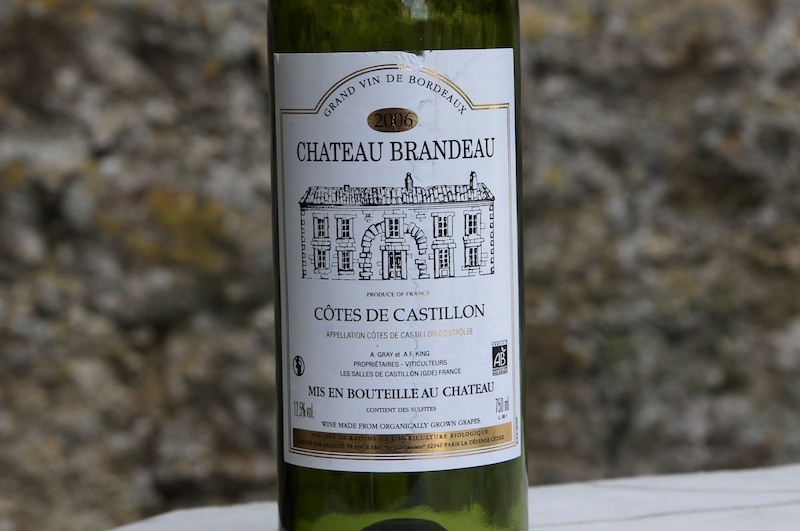
Like many wineries, Chateau Brandeau has an image of its main house (the chateau) on the label of their wine bottles. We lived in that house, so every label is like a snapshot of where we spent part of our summer. We were in the two lower-left windows. For comparison, here’s the real house:
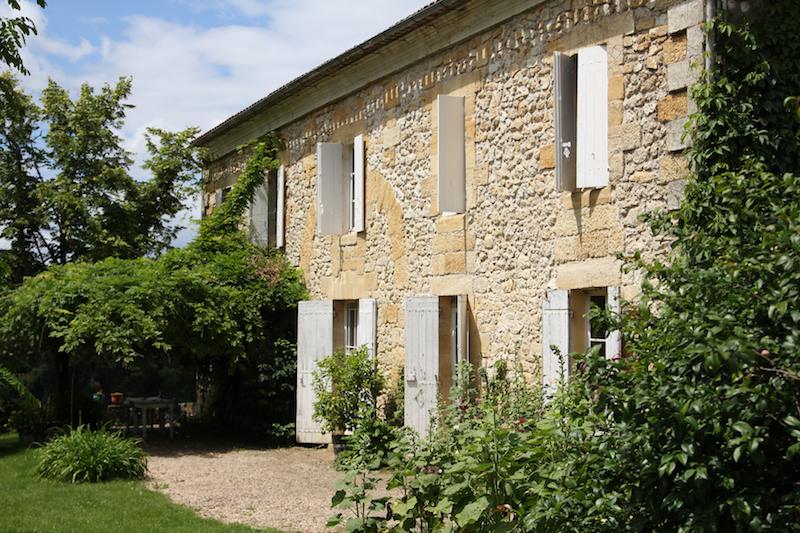
You can see they tweak the dimensions a bit for the label, but same general idea. So what’s the view like looking out from this wine label? Here it is:
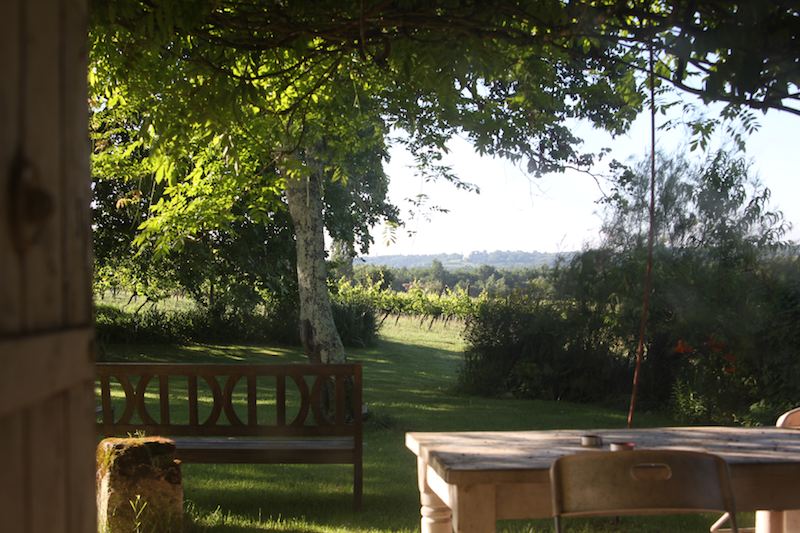
Posted: August 30th, 2010 | Author: Halbe | Filed under: Italy, Tuscany, Umbria, Wine | 1 Comment »
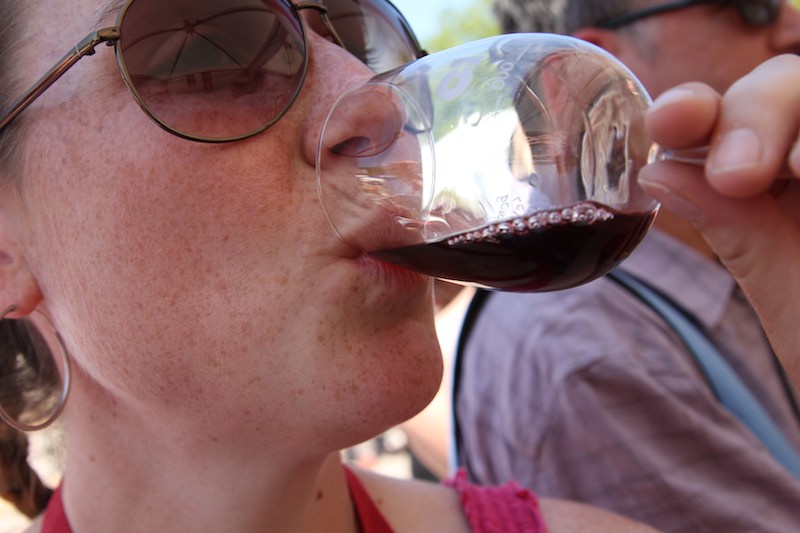
Red wine was never favorite of mine. It was usually overly strong, heavy and sometimes too “in your face.” Being in Europe though, I have grown an appreciation for red wine and now enjoy it quite a lot. In fact, I’d even say, in some situations, I prefer red wine.
The reds we tasted in France were wonderful, especially from the Bordeaux and Bergundy area. What’s finally pushed me to the other side, though, are the reds in Tuscany and Umbria. We’ve had multiple reds that really impressed us. In Tuscany, we bought a bottle of Rosso di Montepulciano, which uses two grapes I wasn’t familiar with: sangiovese 90% (the primary grape used in Tuscany) and canaiolo nero 10% (which has a distinct violet flavor). It’s probably my favorite red I’ve had on this trip so far.
The wine is also incredibly cheap. It was reasonable in France for American standards, but in Italy, it’s dirt cheap. Devon and I went to a wine bar and I was served a Tuscan red which cost 2.50 euros (around $3). Those are serious happy hour prices and it was 9:00 p.m.! I’m going back to the states with a much greater appreciation for red wine. You won’t hear me say “I prefer white,” anymore. Because in Italy and France, I’m a red girl.
Posted: August 11th, 2010 | Author: Devon | Filed under: Bordeaux, France, Wine | 1 Comment »

This Doc-Oc mishap is a specialized piece of viticulture equipment used to spray the vines with a copper sulfate solution. This anti-fungal agent smells strongly of sulphur — an odor that has not yet washed out from our work shirts though we have not touched a vine in almost 6 weeks. It’s attached to a special, extra-skinny John Deer tractor nimble enough to navigate the narrow rows. To see one these rumbling towards you, emitting a wall of noxious, light-blue gas, can be intimidating.
Posted: July 8th, 2010 | Author: Halbe | Filed under: France, Wine | 7 Comments »
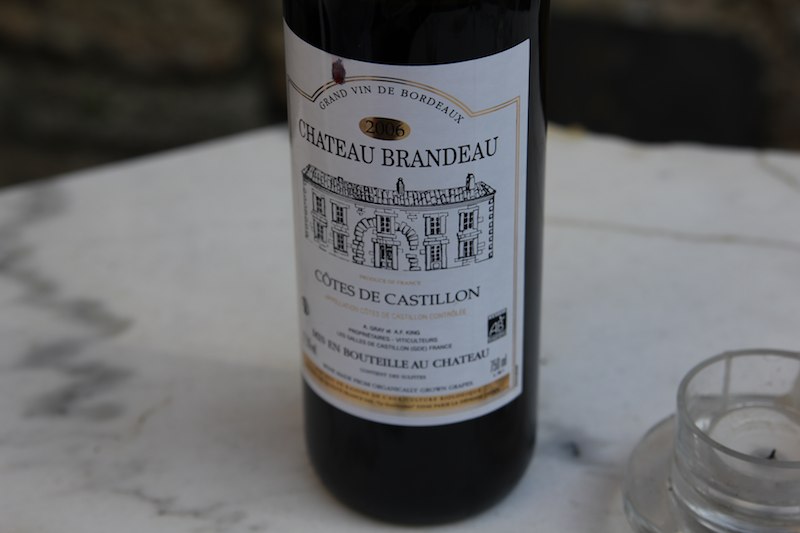
Disclaimer: I speak in generalities in this post. There are exceptions to every rule.
France and California are two of the major wine producers in the world (joined recently by Australia). However, there are some significant differences between the two industries and the wine they produce. We had the pleasure of enjoying a weekend in Bordeaux at their annual Fet la Vin (wine festival) and tasted some amazing wines. But we also learned quite a bit about how CA and French wine differ.
First, the overall feeling toward California wine in France is one of slight disgust. The vintner at our last winery described CA wine as, “fast, sexy and simple.” CA and France grow their grapes and make their wine very differently.
The French wine industry is bathed in tradition. They’ve been making it since the Roman times (read, over 1,000 years). They have a lot of respect for this tradition and it significantly restricts the way wine can be made and grown. The main regulatory body of wine in France is the AOC (L’appellation d’origine contrôlée). They require vines to be grown a certain distance apart. This spurs competition between the vines. They also don’t allow France to irrigate their vines. The reason for this is not only that the French believe the vines need to “suffer;” they also want their wine to reflect the weather of that year, to make it unique. If there’s a dry year their grapes will differ from a wet year.
In France, they always put the year of wine on the bottle, called the “vintage.” One year from the next can be drastically different. They additionally tend to mix grapes and many regions will grow the same grapes. So, if you have a bottle of red wine from Bordeaux there is a 99% chance they used merlot and cabernet franc. If you have a white wine from Bordeaux, they’ve used sauvignon blanc and semillon. Sometimes they list this on the bottle, but generally, they expect you to just “know” this.
As I’ve mentioned, the vintage is important to the vintner. They list the year which will likely tell a local if it’s a good bottle or not – 2005 was a dry year so the wine isn’t as good while 2006 was a year a lot of sun and just enough rain so it’s a better year, etc. Not easy if you’re not a local. So, in this vain, they do not mix their vintages. And if they do, they can’t put the year on the bottle, which is a hallmark of the French wine industry.
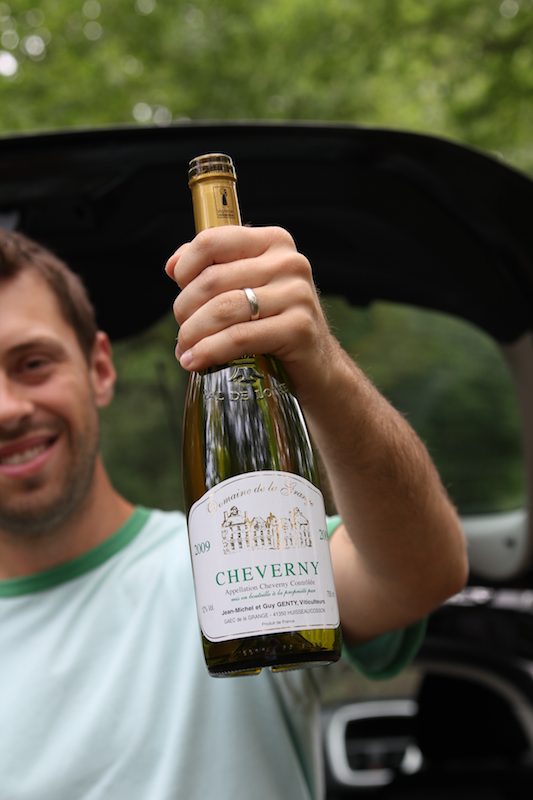
Lastly, the average winery in France is approximately 10 hectares (24.7 acres). The the most expensive wineries in France will even grow just 3-4 hectares to minimize the number of bottles they produce which affects their price. In Saint Emillon, the most expensive region of wines in France, they usually only produce 3 hectares of grapes and produce 10,000 bottles each year making their wine all the more in demand and harder to find. They sometimes go for over $1,000.
All this said, California does the opposite in most scenarios.
In California, their wineries are hundreds of acres. They also water their vines in addition to putting heaters around them, adding nitrogen to their soil and well, babying the heck out of them (pssst, some French wineries do this too). Their vines are essentially the same each year to make their wine consistent. Consistency is one of the major differences between French and Californian wines. The French snub their noses to this concept. Consistency? How is that interesting?” they say.
To make Californian wine consistent, the wineries will mix vintages. This difference is appalling to the French who look down on mixing years. But in California, to make their wine generally taste the same each year, they’ll, for example, mix a little of 2005 with 2009 to make sure it has that same clean, crisp chardonnay taste their customers count on.
They also tend to use a single grape variety like chardonnay or merlot. Now, there are of course exceptions, but when you buy a CA wine, it usually will say chardonnay or merlot on the label. That’s because they use just that grape, or the vast majority of the wine is made with that grape.
Although some CA wineries will label their vintage on the bottle, a bottle of 2005 chardonnay from one winery will taste almost exactly the same as the bottle of 2008 from the same winery. I was talking to one of the other Helpx’ers at the last winery, and when we were talking about this very subject she had a great example. She said she had been buying chardonnay from the same winery for years. It was consistently the same taste she’d counted on from a 2003 to a 2005 to a 2009. It didn’t matter the year, it was always the same wine. CA is known for this reliability to their customers and the French just don’t understand. In their mind, the different vintages should taste different.
The last difference I’m finding is one of personal taste. For those who know me fairly well, I don’t like red wine very much. At least, I used to not like it. I’m finding that the reds in Bordeaux are wonderful and I like them very much. They don’t have the bold strong flavor California reds are known for. The French call it “simple.” Whatever it is, it’s not my taste so when I go back to Cali, I’ll be buying my reds from the French.
I’m actually really excited to go wine tasting in California again with my new found knowledge of wine. It’ll make it more interesting. Oh, and it gives me another reason to drink a lot of wine!
Posted: June 30th, 2010 | Author: Devon | Filed under: Bordeaux, France, Wine | 4 Comments »
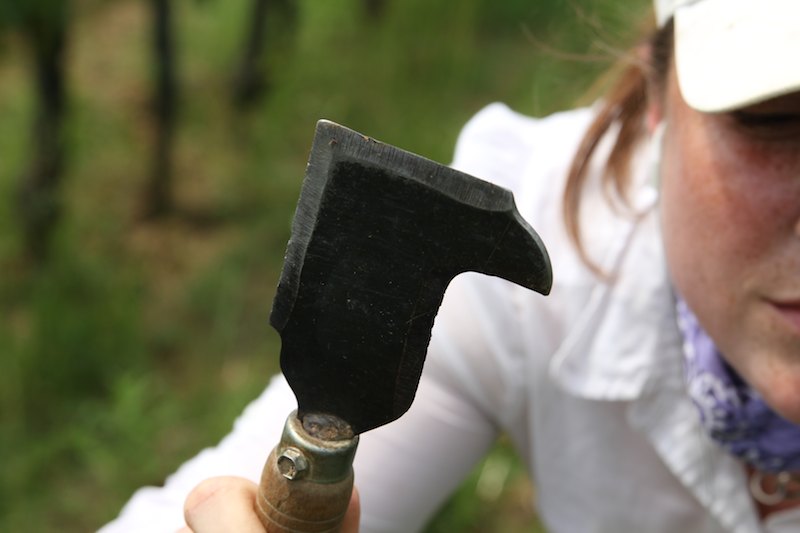
You’d think grape vines would have it easy. The way wine is cooed over by the cultured and wealthy, and labored over by millions of dedicated vintners, then surely their lives must be nothing but sunshine and gentle care, right?
Allow me to introduce a vine knife, held by my lovely wife Halbe. This nasty, hooked blade is one of several torture devices we’ve employed since arriving at our current host. With it we hack and carve the plants, and for what? The idea is this: happy vines make no fruit. Vines beaten to the limit of their survival produce offspring (that’s grapes to us) as quickly as possible.
We start young. Three-year-olds, dude. By now they have decent roots (American, of course) and have grown six to eight long, green vines. They reach out to the sky, flopping in the air like the arms of laughing children. Not acceptable. We spent five days removing these vines from 7,000 baby plants. Halbe preferred the knife, but I just ripped them out with my bare hands. We leave two vines on each, and truss them up with plastic cord, holding them vertical.
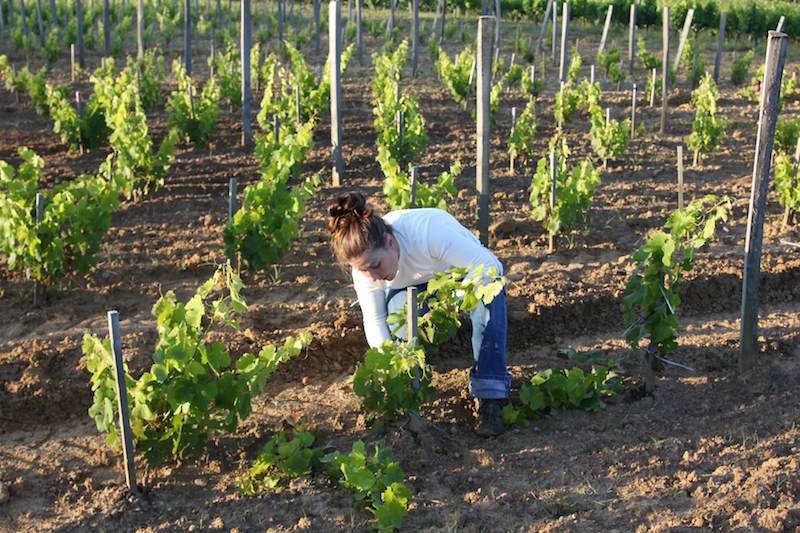
The babies, they don't understand
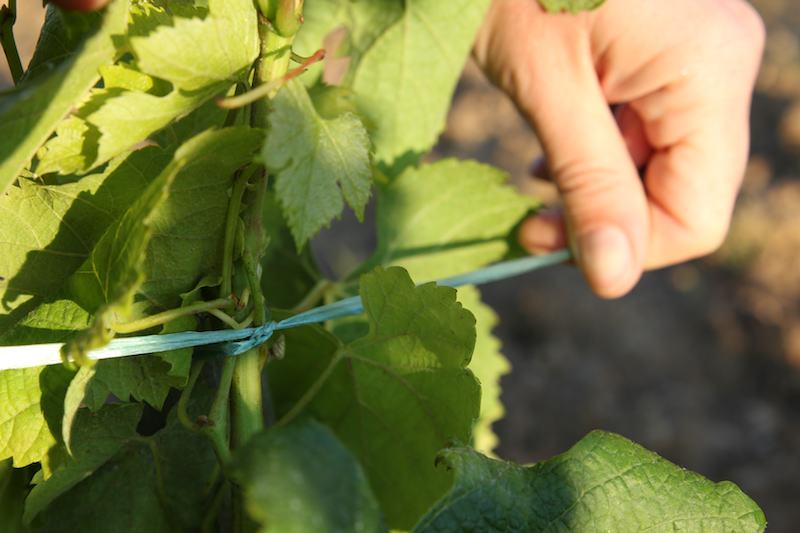
Now, with less vines to support, the roots pump all their goodness into those two remaining, vertically-tied vines, forcing the plant to grow to a better height for picking and further abuse/tending.
Épamprage (eh-pahm-prajsh) comes next. The plants get bigger and eventually produce grapes. They also continue to attempt new vines, from the graft point, from the stalk, and from the head. We hack those off. On some farms, they have a machine to do this. It smacks the vines with strips of rubber tire until those suckers rip off.
What else? Oh yes, if they get too tall, they chop off the tops. You’re not allowed to water them. And, as if to add insult to injury, when they DO grow grapes, some farms do a vert vandage — green harvest — and remove about a third of the immature grapes and throw them away.
It’s a hard knock life, absolutely, but without it, we’d have no wine. Generally speaking, the harder those vines have to work to grow those grapes, the higher the quality of grape and the finer the wine. But not too much pain. After all, a vintner depends on those vines for their own survival.
Posted: June 28th, 2010 | Author: Devon | Filed under: Bordeaux, France, Wine | 4 Comments »
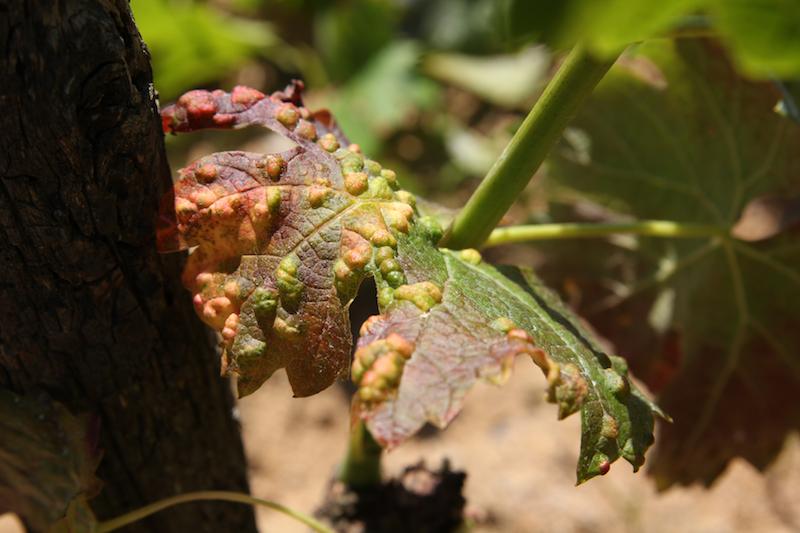
All French wine is from grapes grown on American roots. From the thousand dollar bottle on down to the swill, a little bit of the US of A is in every sip. Here’s why:
In the 1860’s nearly half the vineyards in France had fallen to a terrible blight. Vines, many of them decades old, were faltering, not producing grapes, then eventually dying. No one knew why. The blight lasted for over 15 years, closed over 4 million wineries, and devastated the French economy. The government offered a reward of 320,000 francs to anyone who could cure the problem.
A team of French biologists figured out the cause in 1870: an aphid, introduced from America, called phylloxera. This tiny insect would nest in the leaves (like the one I photographed above), hatch, fall to the ground, and consume the roots of the grape vine, eventually killing the plant.
Knowing the cause was a help, but there was no cure. Farmers tried pesticides and other chemicals. They left frogs under the plants, and let chickens roam the vines with the hope that they would eat the phylloxera. None of these ideas worked. It was Leo Laliman and Gaston Bazille, a team of previously unknown wine growers and viticulturists, who suggested the solution of grafting America’s phylloxera-resistant rootstock on to French vines. Their solution worked, and over the following years there was a great reconstruction of the wineries and their vines, and eventually the wine industry returned to normal.
No cure to phylloxera has been found, and this practice continues today. Every vine I’ve worked on or seen since arriving to France has a graft point near the base. The young vines still have a covering of wax over their graft point, like this:
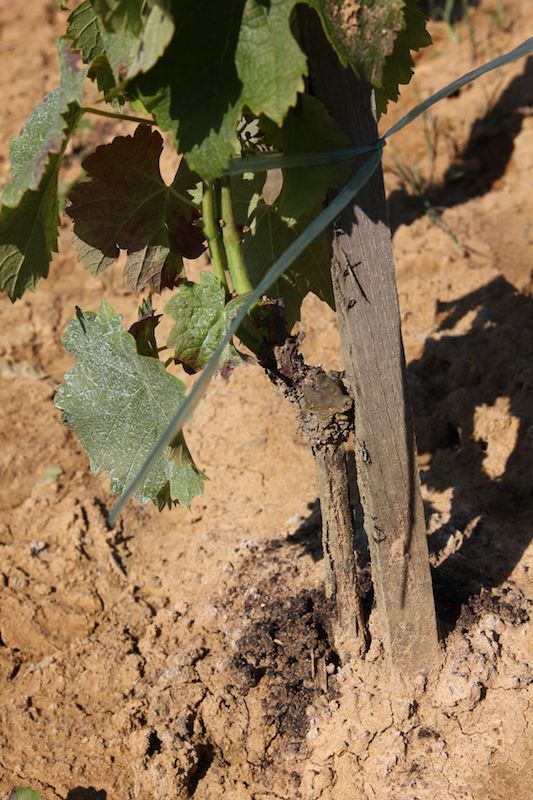
That bark covered stick is a chunk of harvested American rootstock. An inch-long portion of a French vine was grafted on top, and has since grown into several new, green vines. Though the plant will likely contract phylloxera (many vines have diseased leaves like those in the top photo), the plant will remain strong and hopefully produce grapes for decades to come. That American rootstock will also attempt to grow vines, and their removal is one of the common chores on all wineries. In fact, that’s what I spent most of this morning doing with a spade and pruning shears.
As for Leo and Gaston, they did not receive the 320,000 reward. The French government argued they had not cured the blight, but only stopped it from occurring.
Posted: June 22nd, 2010 | Author: Devon | Filed under: Bordeaux, France, Wine | 6 Comments »
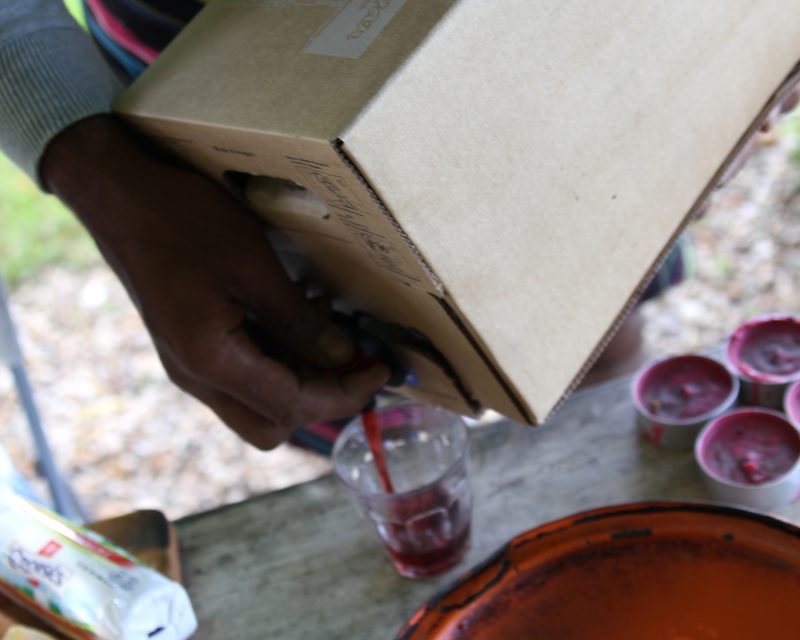
Here we are enjoying box wine from our neighborhood, Cote de Castillon. And the view:
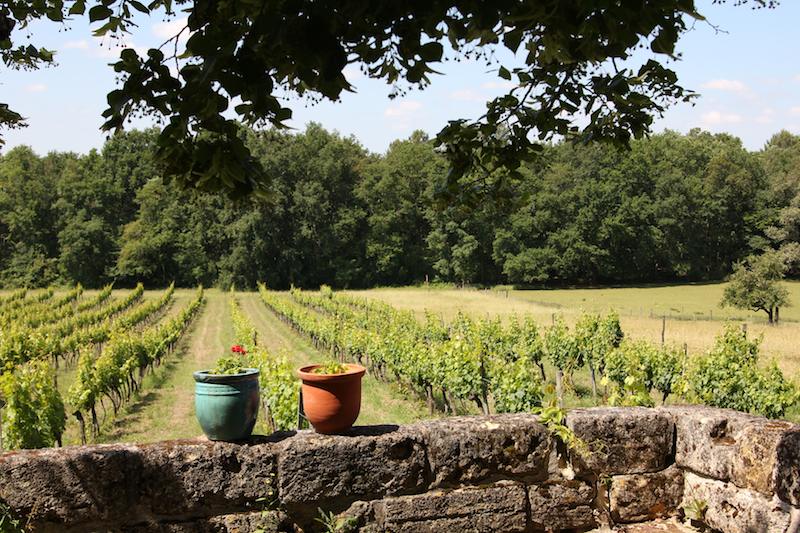
One of the fields of Cabernet grapes.













